Nucleic acids: new life, new materials
Michael J. Gaita, Makoto Komiyamab, Nadrian C. Seemanc, Oliver Seitzd, Jason Micklefielde and David R. Liuf
aMedical Research Council, Laboratory of Molecular Biology, Cambridge Biomedical Campus, Francis Crick Avenue, Cambridge, CB2 0QH, UK. E-mail: mgait@mrc-lmb.cam.ac.uk
bUniversity of Tsukuba, 1-1-1 Tennodai, Tsukuba, Ibaraki 305-8577, Japan. E-mail: komiyama@tara.tsukuba.ac.jp
cDepartment of Chemistry, New York University, New York, NY 10003, USA. E-mail: ncs1@nyu.edu
dHumboldt-Universität zu Berlin, Institut für Chemie, Brook-Taylor-Str. 2, 12489 Berlin, Germany. E-mail: oliver.seitz@chemie.hu-berlin.de
eSchool of Chemistry and Manchester Interdisciplinary Biocentre, University of Manchester, Manchester, M1 7DN, UK. E-mail: jason.micklefield@manchester.ac.uk
fDepartment of Chemistry and Chemical Biology, Harvard University, Cambridge, MA 02138, USA. E-mail: drliu@fas.harvard.edu
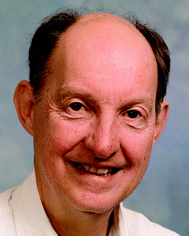 Mike Gait | Michael J. Gait is a MRC Programme Leader at the MRC Laboratory of Molecular Biology, Cambridge, UK. His work focuses on the synthesis of oligonucleotide analogues and their peptide conjugates as potential therapeutics towards treatment of neuromuscular diseases, such as Duchenne muscular dystrophy. |
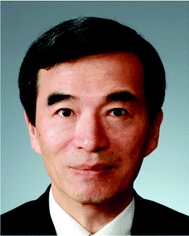 Makoto Komiyama | Makoto Komiyama is currently Professor at Life Science Center of Tsukuba Advanced Research Alliance, University of Tsukuba, Japan and Emeritus Professor at the University of Tokyo, Japan. His research focuses on developments of chemistry-based DNA cutters and their applications to therapy, gene manipulation, and biotechnology. |
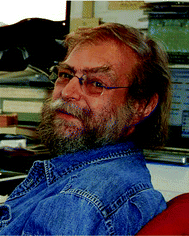 Ned Seeman | Nadrian C. Seeman is the Margaret and Herman Sokol Professor of Chemistry at New York University. He is recognized as the founder of DNA nanotechnology and synthetic DNA topology. He has contributed to the molecular biophysics of branched DNA and to experimental DNA-based computation. |
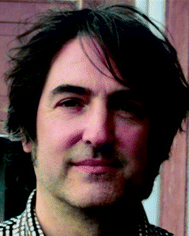 Oliver Seitz | Oliver Seitz is Professor of Organic and Bioorganic Synthesis at Humboldt University Berlin. His research interests include nucleic acid and protein chemistry, molecular diagnostics and molecular imaging, nucleic acid-directed chemistry and sequence programmed protein interference. |
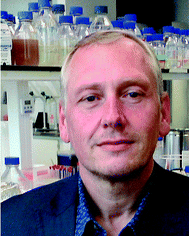 Jason Micklefield | Jason Micklefield is Professor of Chemical Biology at the University of Manchester. His research encompasses nucleic redesign, riboswitches, biocatalysis and biosynthesis. |
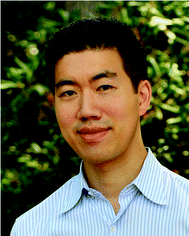 David Liu | David R. Liu is currently Professor of Chemistry and Chemical Biology at Harvard University, Investigator of the Howard Hughes Medical Institute, a Senior Associate Member of the Broad Institute of Harvard and MIT, and a member of JASON. His interests include DNA-templated synthesis, novel naturally occurring nucleic acids, synthetic biology, and directed evolution. |
One hardly needs a reason to celebrate the exciting studies generated in the nucleic acids in recent years. However, the idea of a web collection was formulated following the death of Har Gobind Khorana in November 2011 as a celebration of the legacy that he had created in the subject through his 1968 Nobel Prize-winning work on the genetic code and also on gene synthesis. Although he himself later moved into work on biological membranes, he had already inspired many others by showing how rich nucleic acids chemistry could be and how it could be applied towards biological and medical goals. Since then a new generation of scientists has emerged with increasingly ambitious and wide-ranging approaches involving the nucleic acids. It is from this new generation that a guest editorial team was assembled to reflect the diversity of chemically based subjects now strongly represented in the nucleic acids, and in particular some of the areas that are newly emerging.
After the web collection was announced, a second founder figure in nucleic acids chemistry passed away, in the spring of 2012. Although perhaps less prolific and well known than Khorana, Dan Brown was a highly respected pioneer in the 1950s and 1960s working with Lord Alexander Todd at Cambridge University, UK. Dan proved the 3′–5′ chemical linkage of DNA and went on to contribute a great deal in his career to the design and synthesis of mutagenic and mismatched base pairs. With his modest, incisive and rigorous style, he inspired many young scientists in the UK, Europe and around the world in the chemistry of nucleic acids. Some individual papers contain personal dedications to Khorana, but it is to the memories of both Khorana and Brown that the web collection as a whole is now dedicated.
This web collection is centred on manuscripts submitted to one of three RSC journals: Chemical Communications, Organic & Biomolecular Chemistry and RSC Advances. The web collection covers a remarkable diversity of nucleic acids chemistry and its applications in its broadest sense. Many well-known names in the field of nucleic acids have contributed papers and the vast majority represent novel research either as communications or longer articles. A few papers describe new synthetic DNA or RNA sugar or backbone analogues that may find applications as therapeutics or diagnostics. This is a relatively mature subject area that began in the 1980s and which has been widely exploited industrially. By contrast, a large number of papers describe novel modifications of bases or sugars for the purposes of conjugation of ligands (“click” chemistry featuring particularly prominently) for cross-linking DNA strands, for the introduction of novel fluorophores, fluorogenic or luminescent groups, caged switches or other derivatives for photoregulation, or CAPs for the synthesis of modified RNA transcripts. Some modifications are aimed at providing materials for analysis and manipulation of nucleic acids or to provide new substrates for DNA repair and polymerase enzymes. These research areas have been in development for perhaps only 10 or 15 years.
Another prominent theme is inspired by Khorana's original use of overlapping single strands to create DNA duplexes, but extended to a variety of more complex nucleic acids structural motifs, such as G-quadruplexes, folded aptamers for ligand recognition and as RNA and DNA switches, DNAzymes etc., that may have eventual diagnostic applications. More recently emerging fields involve more extensive DNA structures formed by complex inter- and intrastrand DNA pairing, often termed DNA nanostructures, or formed for the purposes of intricate 3D arrangements (structural DNA nanotechnology). The combination of DNA modification with such assemblies can now be used to increase the stability of such structures and also to create novel polymeric materials. One ferrocene DNA analogue looks to be potentially useful for electrochemical modulation of DNA structures. There is even a paper showing how a finite state clocked DNA machine can be constructed.
The ingenuity of nucleic acids chemists is formidable, particularly in the newly emerging areas involving DNA architecture combined with novel chemical modifications and material composites. This web collection nicely showcases this potential. The future for nucleic acids chemistry is strong and should continue both to fascinate and to inspire further innovation.
| This journal is © The Royal Society of Chemistry 2013 |
